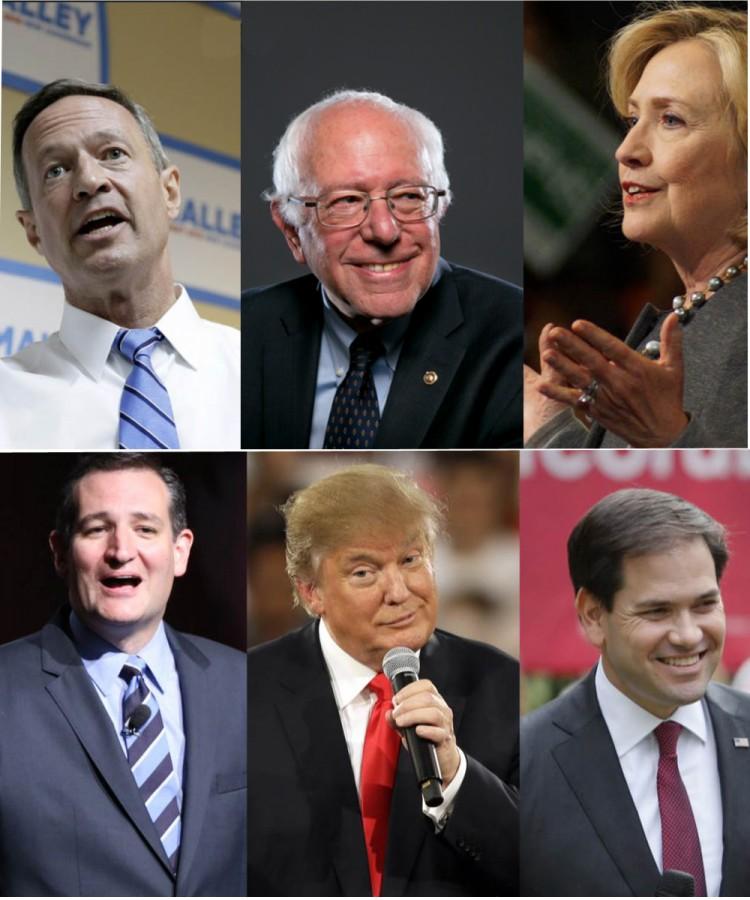Politics in brief
Update on presidential candidate popularity
2016 is an important year, not only for FHS seniors but for all high school seniors across the country as their first opportunity to vote arises. They’ll be joining the rest of the adult society in making crucial decisions regarding the 2016 Presidential election. With lots of candidates to choose from with widely-varying platforms, it can be difficult to decide who to agree with and vote for. Every vote matters and can be detrimental to a candidate’s chances.
Currently, there are three Democrats and 12 Republicans running. The three Democratic candidates are former Sen. Bernie Sanders of Vermont, former Secretary of State Hillary Clinton and former Gov. Martin O’Malley of Maryland. The top three Republican candidates are Senator of Texas Ted Cruz, Senator of Florida Marco Rubio and Businessman Donald Trump. In the past months, these numbers have varied slightly, but in the end, Trump and Clinton are the front-runners of their parties. By now, most people will know about both of these two, but how much is known about the underdogs?
DEMOCRATIC PARTY
As of Jan. 6, Clinton is leading in democratic polls, with Sanders in second and O’Malley in third. Other candidates are gaining headway, such as Sanders, who has support from the American Federation of Teachers, American Postal Workers Union, Laborers’ Union and many more. With his platform of democratic socialism, he supports income and wealth equality, tuition-free community and state college, restoring democracy, creating decent paying jobs that provide a living wage, racial justice and many other policies that are supported by the Democratic Party. His interests are mainly centered around helping the American people struggling in the current economy with the goal to have perfect equality between all groups of people.
O’Malley has been last in the democratic polls for a while now, but he also has a strong platform as he supports LGBT rights, civil rights to all people, taking power away from Wall Street, zero-tolerance crime policy, strong drug policy, affordable or debt-free college and much other strongly supported policies. With only seven percent of Maryland’s voters willing to vote for O’Malley, he will need to work much harder in order to gain any major headway in his campaign.
REPUBLICAN PARTY
As of Jan. 6, Trump is leading in republican polls, with Rubio in second and Cruz in third. Rubio’s platform supports promoting strong families, getting the government to be less involved with farmers, protecting the Second Amendment, protecting senior citizens, standing up for small businesses, honoring veterans and their families, helping workers in this economy, fighting the communism in Cuba and many other problems the U.S. is currently fighting today. His objectives are to protect America and the “American way of life.” At press time, Rubio is 14 points behind Trump.
Cruz has been holding onto the third spot for the republican vote. He is currently five points behind Rubio, and supports mandating a balanced budget, slashing corporate tax to 15 percent, repealing Common Core, removing undocumented immigrants from U.S. soil and many other policies that his party normally supports. His platform basically represents the ideology that the Republican Party has supported for years.
Now that 2016 has begun, it’s time for American citizens to put further thought into which candidate is the best fit. With six top candidates to choose from with varying platforms, everyone will have a favorite. Now is the most opportune time to get involved. This is the year for change, and the year to make a difference. Learning more about certain candidates could be very beneficial and will help greatly with the conclusion of the 2016 elections.



